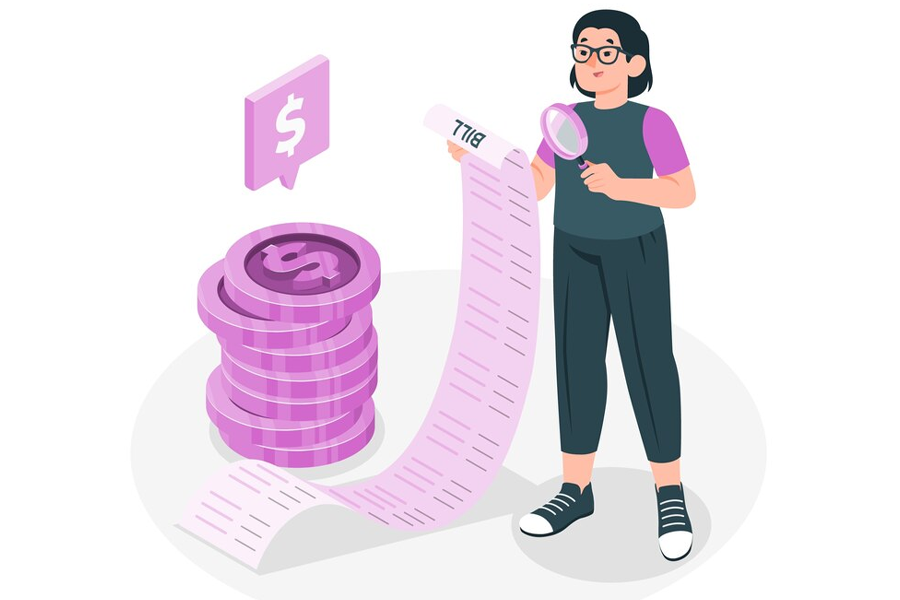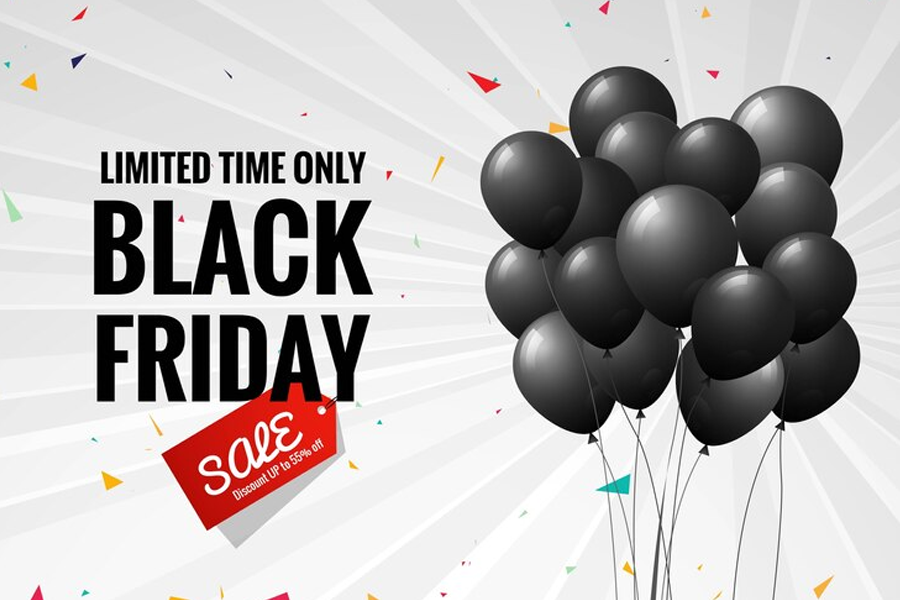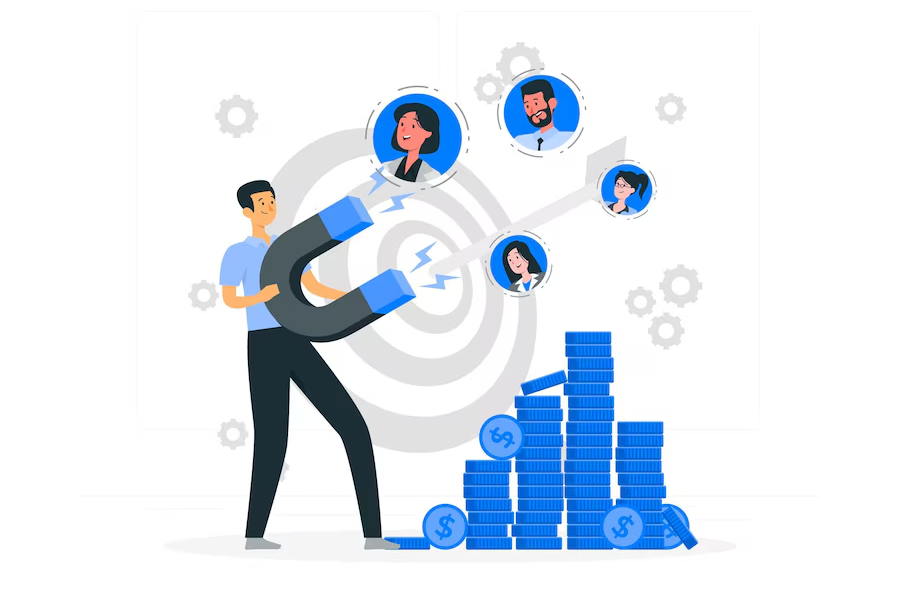Income statements and balance sheets are important financial statements for running a business. While the income statement shows the profit and revenue, the balance sheet expands the company’s assets, liabilities, and equity.
However, all of this will be challenging to account for if you don’t know how to calculate the cost of sale. If you don’t measure and manage the cost of goods sold, it will be challenging to improve revenue and profit.
But what is the cost of sales? Follow this guide to know what it is and how to optimize it.

What Is the Cost of Sale
Cost of Sales is also called cost of goods sold (COGS) or cost of revenue. It represents the cost associated with manufacturing goods or providing services. It also tracks your business’s ability to manufacture goods and deliver services at a fair cost.
The general formula for the cost of sales is beginning inventory + purchases – ending inventory.
The beginning inventory is your inventory value at the start of the report period. Meanwhile, the ending inventory is the value at the end of the accounting period.
However, there are different ways to calculate the cost of sales for several business types, such as manufacturing, service, or retail.
- The manufacturing company uses the general formula:
COGS = Beginning Inventory + Cost of Goods Manufactured − Ending Inventory
- Service businesses don’t sell physical goods, so they don’t have traditional COGS. However, they have costs when providing their services. Here’s the simple formula:
Cost of Revenue = Direct Labor Costs + Other Direct Service Costs
- The retail company uses the general formula because they are buying from a wholesaler or manufacturing company:
COGS = Beginning Inventory + Purchases − Ending Inventory
Example of the Cost of Sales
Now let’s explain the concept with an example.
A company had 100,000 IDR of inventory at the start of March, spent 250,000 IDR on various inventory items, and had 80,000 IDR of inventory at the end. Below is the cost of sales in March.
This means the following:
| Beginning inventory | 100,000 |
| + Purchases | 250,000 |
| – Ending inventory | 80,000 |
| = Cost of sales | 270,000 IDR |
If you want to know how your business is performing financially, there are more metrics like gross profit and gross margin percentage that COGS is used to calculate.
The Importance of Cost Optimization and How To Do It
Cost optimization involves decreasing costs while not compromising on value. You want more of your target audience to patronize while still retaining the quality of your products or services.
The following are more benefits of cost optimization:
- Higher Profits: You will make more profits from each sale when you find efficient ways to lower costs.
- Better Prices: Customers will find your prices more reasonable and will continue to buy from you even when you increase prices because they know you will deliver quality.
- More Flexibility: When you lower costs, you can try new things and invest in new areas in the market.
- Improved Cash Flow: Reducing costs can significantly impact the cash flow statement. As a result of having more money on hand, you can handle daily operations and emergencies properly.
Cost optimization has two sides: cutting costs and improving quality. Don’t only focus on cutting costs so you don’t end up cutting corners or compromising the quality of your offerings.

Cost Analysis and Identification
Cost identification is the process of knowing the cost of operating your business. In contrast, cost analysis involves the examination of business costs to understand how some decisions and investments affect your business.
If you aim to optimize the cost of sale, then your first task should be the cost analysis and identification process.
Here’s how to do it:
- Identify Direct Costs: You need to identify all the costs that directly come from production, such as raw materials, labor, and manufacturing overhead.
- Identify Indirect Costs: These include operating expenses that are not directly tied to production. These include administrative expenses, marketing, sales, and logistics costs.
- Assess Cost Efficiency: Calculate the cost per unit and find areas/loopholes to reduce cost. One way is to negotiate with suppliers or find a supplier you can easily buy more items from without compromising quality.
- Analyze Cost Trends: Track costs over time and identify dips and increments. Find out why the cost was lower at some point and the opposite at other times.
These steps are essential for identifying and analyzing costs so you can optimize the cost of sale, thereby delivering quality and cutting costs. After removing cost from revenue to determine profit, check your industry’s profit margin standards to know if you are on the right track.

Streamlining Sales Processes
Another way to optimize cost is to streamline the sales process. This is an indirect way to cut costs as it can eliminate money-consuming activities.
Here’s a simple approach to do it:
- Automation: Use Customer Relationship Management (CRM) tools to save time and reduce errors by automating repetitive tasks. Such tasks include lead tracking, follow-ups, and data entry.
- Standardized Sales Practices: Have a straightforward sales procedure. Depending on how big your business is, you can have scripts, templates, or even a checklist to guide you when talking to customers.
- Use Data Analytics: Use a data analytics tool like Tableau to get a better understanding of your customer’s purchase behavior. This helps you target the most promising leads and customers and sell them a better experience.
Your sales, marketing, and customer service team should always walk together to align messages and ease transactions.
Efficient Marketing Strategies for Cost Optimization
Earlier, we mentioned that marketing cost is not a direct production cost but still adds to COGS.
The following are ways to cut distribution and marketing costs effectively:
- Segment and target a group of people instead of a broad group of people.
- By using the right strategies, you can reach a large audience at a low cost on social media platforms like Instagram, Facebook, and TikTok .
- Influencer marketing is another effective method of promoting your goods.
Also, user-generated content is more cost-effective than influencer marketing. However, you have to be ready to give more products for free.
Lastly, track performance to know which areas to keep investing in.

Technology and Automation
Automation helps save time and, in turn, money, and it can also help you make more money. For example, an email service provider can help you segment your audience, schedule campaigns, and send follow-up messages.
With that alone, you save yourself from the stress of doing everything manually, and this can make you more money. How? Imagine how many customers a business can lose just by sending the wrong message.
For example, sending a new subscriber promo offer consecutively without providing value can put them off, except they are fully aware they need your products and have pressing needs for them. If that’s not the case, you have to segment your audience and create a personalized message for them.
Other automation tools to use include CRMs like Zoho and marketing automation tools like Hubspot.
Employee Training and Efficiency
Having a few employees who are more efficient at their jobs is relatively cost-effective in Indonesia. Therefore, it is essential to train them to help them become more efficient.
Better yet, you can also train them to handle multiple related tasks so that when someone is absent, they can take up the role, which reduces your need to hire contract workers.
For example, if your sales team receives training to handle customers, they can help with customer service during peak times. This way, you don’t always have to worry about losing customers because there is not enough staff to handle customers.
Data-Driven Decision Making
Consumer trends are likely to change rapidly, so you must use data when forecasting and making decisions. By tracking expenses, sales, and consumer behavior, you can know where to cut costs and what to do to improve sales.
For example, if you notice that one product outsells the others, you can increase marketing efforts to boost its sales. You can also upsell it and cross-sell it to increase sales of other products and increase profits.

Pricing Strategies for Cost Optimization in Indonesia
It’s essential to choose a pricing strategy that yields significant profit without compromising quality. Sometimes, business owners are tempted to make a loss just to sell. Meanwhile, in other cases, they can reduce price and quality just to make sales, which is bad for reputation and credibility.
You should be able to determine what is best for your business by checking industry benchmarks for prices and knowing what’s fair for the quality you’re offering.
The following are some strategies:
- Cost-Plus Pricing: It involves adding the cost of production and a percentage to get the selling price. It covers all costs and allows for a profit margin.
- Value-Based Pricing: In this case, you set the price based on perceived value. For example, one plate of rice alone is 1000 IDR, while a plate of rice with turkey could be 1800 IDR.
- Competitive Pricing: Setting prices based on what your competitors charge. You either offer more value and charge the same as competitors or charge less than them.
- Penetration Pricing: It involves selling at a low price initially and later increasing pricing.
Choose from these strategies based on what gives you a win-win situation between you and your customers. It should benefit not only your customers but also you.
The Importance of Competition Monitoring and Benchmarking
Is it possible to outsmart or beat your competition if you don’t know them or what they are up to? This doesn’t imply that you stalk your competitors but study them and come up with ways to beat them with speed or a better idea. This always puts you one step ahead in the ever-evolving business world.
If your competitors happen to make more sales than you, then it’s obvious there is something they are doing that you have yet to do. It’s your job to find that out.
It could be that their packaging is exquisite or their marketing strategies are top-notch. You can actively check their social media channels to find out more about this.
Customer Acquisition and Retention
You should always acquire a new customer, but it is essential to get your previous customers to buy from you again. Why? Because it is cheaper to retain customers than to acquire new ones.
The first step is to create a compelling marketing strategy that gets people to buy from you. The next step is to deliver excellent customer service to get previous customers to repeat purchases and refer others.
The more people buy from you, the more you can learn new ways to cut costs and deliver a better experience. More ways to retain customers are by offering good customer service, sending personalized messages, and creating loyalty programs.

How to Measure and Track Cost Reduction
The first step to tracking cost reduction is by setting specific goals. For example, if the COGS of your business is 400,000 IDR in January, but you would like to reduce it to 200,000 IDR in April, that becomes your goal.
After that, you can do the following:
- Use accounting software to track expenses and inventory management software to oversee stock levels and record waste.
- Regularly review cost data and pay attention to the pattern.
- Consult with other departments to learn what areas to cut costs.
Comparing your actual expenses to your goal expenses should give you an idea of how you can improve your financial health by increasing profits.
Frequently Asked Questions
How can the cost of sales be reduced?
According to this guide, the ways to reduce the cost of sales include:
- Retaining more customers;
- Negotiating with suppliers;
- Streamlining sales process;
- Training staff and improving efficiency.
What causes the cost of sales to increase?
Rising costs of raw materials and labor can lead to increased costs of sales.
Is the cost of sales and COGS the same?
COGS and Cost of sales are similar, but manufacturers and retailers use COGS. Meanwhile, service-oriented companies use the cost of sales.